The Ugly Reality Behind Amish “Reality” TV
Have you ever watched Amish “reality” TV? This type of programming made its first big splash in 2004 with “Amish in the City”.
The series followed five Rumspringa-age Amish youth paired with a similar number of non-Amish young people living in a home in Los Angeles.
“Amish in the City” was just a precursor of what was to come. The genre’s heyday came about a decade later, exemplified by two shows: “Amish Mafia” and “Breaking Amish“.
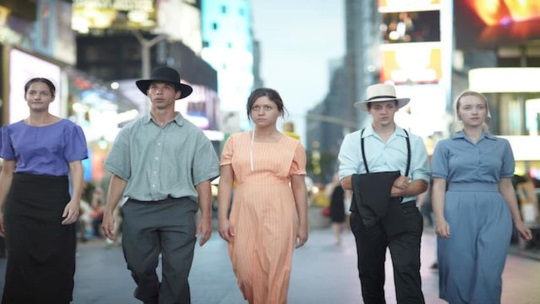
Both of these programs debuted in 2012, and ran for several years (“Breaking Amish” lives on, at least until this year, in the spin-off series “Return to Amish,” which has racked up five seasons to date).
These shows were criticized for fantastic plots, foul language, and inaccuracies. You could also add “scripted nature” to that list, but that is the norm for the “reality” TV genre.
Both “Amish Mafia” and “Breaking Amish” attracted outsized attention in the media, many followers, and no doubt a lot of money for the producers and networks which aired them.
Behind the scenes at “Amish: Out of Order”
A recent article on Medium (hat-tip to AJ for bringing it to my attention) addresses another show – which goes unnamed by the author, but given the details is clearly the “Amish: Out of Order” program, another series which also aired, for one season, in 2012.
It was done by the National Geographic channel (who had aired a stand-alone, similarly titled program called “Amish Out of the Order” a couple years earlier, and which I felt was pretty well done, having more of a documentary approach).
At the time of its premiere I noted that the new series had more of a reality-show type feel compared to the previous production. Mid-season, Mose Gingerich gave an interview to us here (Mose was one of the Amish youth in “Amish in the City,” and involved in both “Order” productions).
It turns out that was the case and the new program, contrary to its predecessor, was more in line with the “reality show” dynamic.
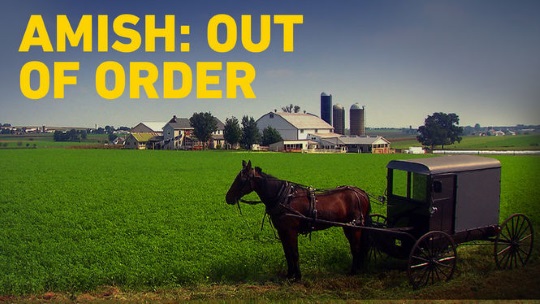
In “I Worked for an Amish Reality TV Show“, Claire J. Harris describes her work on the program as a low-paid production assistant.
Claire writes about the dynamic behind the show, and how she was bothered by the motives and methods of the show’s bosses. She describes how the young Amish-raised people recruited into the show were basically characters in a scripted drama, orchestrated from afar.
Claire admits that the producers “didn’t talk about ‘right’ and ‘wrong’ so much as what we could get away with. The common refrain around the production office was, ‘Well, the Amish don’t sue.'”
Though bothered by these aspects, being in the US on a visa and dependent on the work to keep her legal status, she found herself in an uncomfortable position, which made leaving the job difficult.
The show had a dilemma early on – the Amish youth were reluctant to speak much about the “juicier” topics needed to build tension and drive the narrative. This meant that the producers had to create drama through manufactured plotlines and scenarios:
By the time I arrived on the Amish show, it had already devolved into scripted television. There was a three-week turnaround for every episode and none of the Amish were doing anything that made for compelling television. Some had traumatic pasts that had caused them to leave their communities, but none were willing to talk about it. When they did talk, it was in a stilted monosyllabic way — after all, none of them were professional actors.
…
Instead, we manufactured drama. We pushed these Amish youths to encourage their other Amish friends to run away from their families. Then, we provided them with cars and filmed them going to steal away their friends in the dead of night. With a little fudging of dates of birth, we could make them legally consenting adults who didn’t need parental permission to appear on national television.
About the tactics needed to get the participants to perform:
The Amish didn’t sue as we tried to bring them into conflict with their families, putting them at risk of permanent excommunication. If they refused, we waved contracts in front of their faces, a callback to the legally binding documents that we’d made them sign, knowing they didn’t understand the fine print. They were teenagers with eighth grade educations who knew nothing about reality TV. We didn’t care what would happen to them after we left or how we fractured their relationships with their communities. They trusted us and we wanted ratings.
Ginning up drama was the show’s modus operandi, at least until a truly dramatic moment arrived, born of tragedy:
Cephas, the leader of the pack of troublemakers who thought that being on television was a waste of time, died in a car crash.
The camera crews weren’t around when he died. The Amish kids were reckless when it came to pretty much everything. They’d lost their communities, their identity, and in many cases, also contact with their families. They drove too fast and without seat belts. A 17-year-old cast member had already survived a major car accident that was featured in an earlier episode. We didn’t discourage this — on the contrary, footage was coming back to the production office from the back seat of cars being driven by ex-Amish teenagers racing along, well over the speed limit.
I came into the office to the news that Cephas had been killed during the night. The production team was already charged into story mode — scripting story lines around a dead teenager who had no longer wanted to be on the show.
Claire explains that “the producers expressed varying levels of sadness” at the young man’s death. Regardless, 19-year-old deceased Cephas Yoder became the emotional focus and “centerpiece” for the rest of the season.
Ironically, as Claire notes, Cephas had been one who saw little value in the medium, once telling a cameraman “You seem like a nice guy”…“Why would you work in anything as useless as television?”
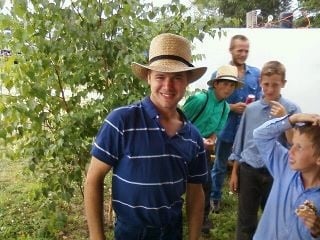
Claire describes many more details of how the show operated, and the internal conflict it generated, at least within her.
She was eventually given an offer to continue working with the company in a promoted position – on another “reality” show, about gypsies. She concludes:
The producer told me to come back to her with an answer. I spent a few days imagining myself as a reality television producer, my immigration status permanently tied to my job at the company. I saw myself confronted by the death of another “character” and simply getting on with the job of turning that tragedy into a story. To my surprise, it wasn’t hard to picture at all — I could easily see myself in 10 years time becoming someone who no longer knows the difference between reality and “reality.” And that terrified me.
Claire ended up in Mexico teaching English, for less money but presumably more internal peace.
Mose Gingerich later memorialized Cephas Yoder in a post on his blog.
Not really surprising
I appreciate that she came out and wrote this article, though I don’t think what Claire has written here is especially surprising.
People knew that these shows, and reality TV in general, were produced and manufactured and the product which you ended up with tended to be quite distant from anything resembling “reality”.
It’s the nature of the beast – episodic programming demands conflict, drama, emotional arcs, and neat storylines tightly packaged in 45-minute chunks which somehow all tie together to create a storyline to keep an audience invested and tuning in across a 10-episode season.
What really comes through in Claire’s article is the emotional drain and mental gymnastics that must be needed to craft such a show.
Distance helps, as she suggests – being in a big-city production studio while your “characters” are a thousand miles away makes it easier when sketching out story arcs for these troubled young people’s on-screen lives:
I never met the Amish who worked on our show, and neither did the story producers, the people whose job it was to concoct this alternate reality. It was filmed in Missouri and we were in a production office in New York, busily plotting their future lives on pinboards, mapping out potential story beats, and molding their emotional arcs into something resembling a narrative.
Claire says that they claimed they were “documenting” Amish life – but admits that what they were really doing was “facilitating”.
I take Claire’s article as confirmation of what many suspected – or were sure of – in the heyday of Amish reality TV, when Lebanon Levi and Jeremiah Raber were making regular viral media headlines.
It seems that the peak of Amish reality TV programming has passed – at least for now. But, I won’t be surprised if we see another batch of shows in future.
The Amish are fascinating to many outside observers, and there are many who commendably take the time to learn about the people, their beliefs, and appreciate their way of life on more than a superficial level.
Rumspringa mythology and the excommunication dynamic, on the other hand, have the potential to draw the attention of a much larger audience.
Those are usually not the people interested in going much below the surface, but – importantly for the business model – are willing to reward manufactured drama with their time and attention.






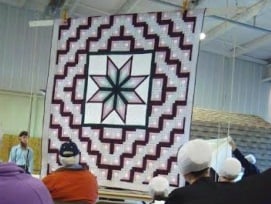
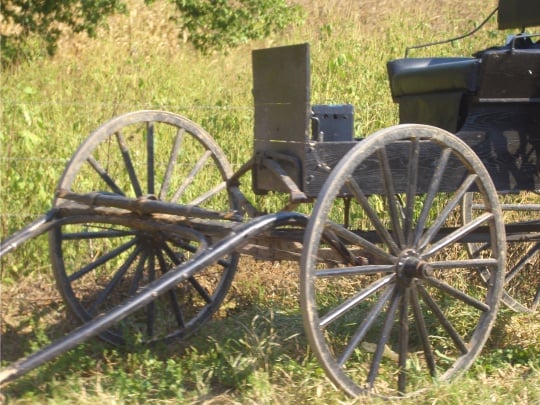

Reality TV
I found the Amish Mafia show entertaining until it became too preposterous. It soon seemed obviously contrived and cartoonish. Some characters like Lebanon Levi were so far over the top reasonable people could wonder were they real people or actors. I recall thinking if these were real Amish young people, their lives would be forever changed by what they were doing, and probably not for their own good. This article reveals the dark truth that at least some of these characters were actual Amish kids recruited and exploited by a mercenary entertainment industry.
The things we learned from Amish Mafia...
While the show ran, Amish Mafia had an accompanying website with a “fact generator” feature which spit out supposed facts about Amish life.
I didn’t post a lot on these shows during their peak, but one post I couldn’t resist was sharing some of the “facts” they were providing. Some of these were subtly amusing, some were simply absurd:
https://amishamerica.com/amish-mafias-4th-season-will-be-its-last/
The things you learn from “Amish Mafia”…
By the way, I somehow got sucked into visiting the “Amish Mafia” website, and learned some interesting things via a “fact generator” feature on the website.
According to the Amish Mafia site (these are all direct quotes):
During Rumspringa, children between the ages of 14 and 16 are given greater personal freedom and allowed to form romantic relationships.
Lancaster Amish are required to wear suspenders, but in Ohio only the bishop, the deacon and boys under age 12 may wear them.
Everyone in Lancaster gets their head coverings from one woman who provides them.
The Amish will occasionally maintain friendly relationships with English people.
Amish etiquette dictates that a person must ask permission to enter another’s house.
Bundling is a traditional Amish practice of wrapping two people separately in a bed.
An Amish horse and buggy can travel up to 40 miles per hour.
A brand new Amish buggy costs about $5,000, and a used buggy about $2,000. Usually there is one buggy shop in each Amish community.
An Amish woman is forbidden from allowing a man in her house unless her husband is at home.
In the Amish community, men and women are segregated until Rumspringa.
Although there are no official Amish communities in North Dakota, many Amish people relocate there to continue their modest lifestyles.
I actually found that pretty entertaining in its own way. For a lot of these, you can imagine the kernel of truth that each “fact” grew from.
I was pretty discusted when I saw the mafia etc as no way do amish behaved that way. I had personally set food in lancaster, kolona , shipshewanna, and more. These are downhome simple people. I do highly respect these amish. Please do not paint ugly pictures of them. Media had gone too far!
Amish and reality shows
The Amish are as capable of sinning as any other religious group. Most Amish are decent people who face temptations similar to those of non-Amish. They should neither be vilified for being human, nor anointed into sainthood just because they choose a lifestyle few non-Amish would care to live. I’ve met some honest Amish and some not so honest Amish. I’ve watched snippets of those “Amish” reality shows. I found them to be as fake as any trashy reality show.
Vulture Capitalists
Reality tv to me is actually an oxymoron. Most reality tv is scripted. These greedy vulture capitalists prey on the most vulnerable of our society. The vulture capitalists have also corrupted about 80% of our elected congressmen and senators, plus the presidency. That’s why they hardly ever represent the american people anymore. If they represented the american people, they would make laws prohibiting these vulture capitalists from preying on the vulnerable like that for profit.
The same goes other things such as our corrupt healthcare system. Our corrupt for profit private prison system. These things are all tied to television through tv ads and marketing.
I could go on and on how corrupt our country has gotten, but I won’t. These days it’s profit over humans, period.
Television vs Reality
I have a great deal of respect for the Amish. Reality television has painted a disrespectful and incomplete picture of these people who live a quiet and hard working life. I quit watching their “reality” shows shaming the Amish. They don’t deserve to have their lifestyle put out there in such a way. The manner these producers present their story has prompted me to stay way from these type of shows. John Keim has it right that it is profit over humans. They should be ashamed.
Amen!
Thank you for this wonderful eye-opening article. I never watched or even had any interest in watching the reality programs discussed here. I KNEW that TV would vandalize anything or anyone they could for financial gain. Obviously, many people did watch. Maybe this article will help them realize the shows did not reflect the truth.
I have great respect for the Amish. Although I am not Amish, I find many things about their lifestyle that can be adapted to my life to make it more fulfilling. I would love to see an Amish sponsored documentary about their lives. So many positives we all can learn from!!!!!
Glad you liked the article, Margot. I appreciate that Claire wrote it and gave us this first-person look at what went on. Even though it is long after the show ran, it was probably not easy to tell this story.
Amish reality shows
I purchased a dresser from a local furniture store, and the owner asked me if I had watched the “mafia” show. I told him it was probably as accurate as a show would be about Jehovah’s Witnesses. No, I wasn’t even interested in the exploitation of such a kind people. I am learning Pennsylvania Deitsh and here in Ohio I live in the heart of Amish Country. It is a struggle for their culture in this “progressive” world we live in with all it’s technologies. But they are coping as best they can. Farming is becoming harder and harder because of government regulations. I enjoy your website, and read it regularly. Thanks for all the information.
Sandy Kennedy
Sandy, thanks very much – for your comment on the show and about the site in general. I’m glad you found us.
As a side topic, just wondering how learning PA Dutch has been going? How difficult/easy has it been learning it while living in Amish Country?
Television
TV and movie people are pretty much just scum, they will use anybody or anything to make cash .
a friend of mine used to do movies and provide equipment and you always had to be on the your toes are they rip you off
No surprise
The only surprise is learning that people thought it was real.
TV is a business. To make money they need ratings. Why do you think the news is filled with violence and emotional stories? To hook you to keep you watching. More people watching equals more money from comercials.
People are always used and exploited by TV, Hollywood, newspapers, etc…
Next time you pick up a newspaper, pay attention to the cover/headline and picture. Same with magazines. All designed to grab your attention and make money.
Best thing you can do is turn the TV off. Go for a walk. There’s a whole world out there.
Go for a walk...
Simple and underrated advice for physical health and a clear(er) head in the digital world we live in. I even tried it myself today, it works 😉
TV Show
There is an old saying “ garbage in garbage out”. These shows were a bunch of crap!
The Devolution of Amish Reality TV
In 2010 Keo Films, out of London, England, ran a series titled “Meet the Amish.” It was part of their “Meet the Natives” series – popular in Britain. They filmed four Amish young adults visiting London, and documented their experiences in a different culture. Lots of issues at the time with the format, but then there was controversy about the entire “Meet the Natives” premise. From there? It’s been a steady, downhill slide into reality television as far as the Amish go. (Like reality tv isn’t a downhill slide, period. Sorry.) I have no idea whether it’s still accessible or not, but for anyone interested in a relatively proud ancestor of the garbage produced now, that would be a choice.
Thanks for mentioning that Jim, I forgot about that one. As you know there have been other productions on the Amish over the years as well, both series and more limited production, of varying quality. A couple of others that came to mind are the related “Amish Renogades” and “Vanilla Ice Goes Amish”, which had a construction theme. I think those were more benign than the Breaking Amish-type shows.
REALity
I just wish the Story that was told about the AMISH was truth. When they LEAVE the Amish culture, the struggles they go through, and even though they may go through extremes, the Balance that hopefully comes through because of their religious upbringing. What the producers didn’t think of is the idea that MANY people are interested in the little things in the Amish culture – how they garden, preserve food, make clothes, work in the fields. They should do Documentaries NOT Reality TV. I think of how simple their houses are, the Herb bed, How they cook a meal, what they do on Sundays, etc… THAT is what we want to see, not them getting drunk, sleeping around, having babies out of wedlock, and the Drama that they throw at us. We need to see the POSITIVE side of the Amish. NOT that they never do anything wrong though. Just that what they do RIGHT is what we want to learn about.
Has anyone ever thought of the PROS of how the Amish lifestyle is concerning GREEN living and Global Warming? There MAY be controversies on the Plowing the land verses No Til in the Ag industry. We need to see these things. Find the Best and a Balance in the TWO worlds!!
Surprized?
Geld regiert die Welt.
Quelle grande surprise!
It was only a matter of time. Those who can fight back do. Those who are unable don’t. This is Hollywood and its subsidiary preying on those whom they know are in little position to defend themselves.
When I said, “There’s nothing good on television any more,” people looked askance. When Former President Obama’s Admin changed televion’s signals from analog to digital, I did not buy a box or an antenna. I have absolutely no regret.
Reality?
My first foray into ‘reality’ TV was the program Survivor. I made it three episodes in on the first season before it became clear that it wasn’t anything I wanted to watch. It was clear by then that the only ‘reality’ was the participants were expected to stab one another in the back to get through to the end, not combine their resources and talents to survive in the situation the found themselves. Nope. Sorry. I live in reality that is sort of like that I didn’t need to watch it for ‘entertainment’.
The thing that surprises me is that any of these shows have an audience. Like Jim Kramer I didn’t bother with a box to unscramble all those new TV channels. I have an old antennae on the roof that pulls in the free stuff and occasionally I turn on the TV and tune in to PBS or a channel that specializes in the old family shows that used to get good ratings. The rest of my entertainment I find in reading real live books that you have to hold in your hand, YouTube channels that are actually documenting the ‘reality’ of their lives homesteading or teaching the skills I would like to possess myself.
Reality TV? Nope. No such thing. The people providing the money to put it on are just looking for a return on their investment. They get that by pulling down a big ‘share’ of the public watching. And they get that by creating drama to create interest. And they don’t appear to care one whit how they do that.
The media in general...
We rarely watch television in our household… so I can’t speak to specific programs. However, I think “J” makes a good point. The media, in general, is a business. They produce/write/publish what sells. Some years ago a newspaper editor told me, “We only print news so people will buy the paper and we can sell advertising.” Another editor was fond of saying, “Controversy sells.”
What’s unfortunate is that in this pursuit we are also witnessing the death of journalism as we knew it.
What might be even more unfortunate is that the general public not only accepts it, they thrive on it.
So producers and editors are focused on what makes viewers and readers tune in or click links. Given the amount of anger that exists these days, riling people up equates to more readers and watchers. “Want somebody to be mad at? Consider the Amish! We’ll help you understand how weird they really are…”
You can prove this to yourself if you’re on social media. Make some relatively opinionated statement. You’ll get far more interest and comments. I recently posted a photo of a beer I discovered and liked. One commenter really took me to task for “promoting rotten stuff that no one needs.”
Controversy sells.
Reality TV is an oxy moron, TV is the furthest thing from it. With all the drug gangs and inner city violence producers exploit a national treasure for a sensational crock to enrich themselves. Boob tube misreprentation.
What reality TV has done to the Amish community in Ohio
I live about an hour and a half away from Holmes County Ohio. And I used to go to Amish Country before the reality TV shows moved in and it was a nice place you can get good quality Goods good quality food and it was nice and relaxed.
Yesterday I went to Amish Country For the First Time In many years and it has turned into a tourist trap.
The two main Dutch restaurants are commercial food they’re not homemade food anymore. The gift shop across the street from it it’s just full of stuff that I carried at my gift shop inside of a historical Hotel from many different National Vendors.
It’s a absolute shame that someone had to come in and an exploit this community and take it from a nice place to visit to just another money hole of a tourist trap.
You hit the nail on the head, Heather! There are still a lot of tourists coming to Holmes Co., but we here more and more people saying it has become too commercialized and that Berlin is nothing but a tacky tourist trap with “nothing Amish about it.” Recently someone called Berlin “an Amish-themed Disneyland atmosphere.” It is sad. Getting out into some of the smaller towns or way out on the back roads is the way to see the real Homes Co.!
Vomit Producing Dreck
I ran across some of this “Amish reality” TV on Youtube. It literally turned my stomach. I live near Amish country in Ohio and I have interacted with the Amish often in business. As a pastor I have actually studied the Amish. This garbage is truly the work of Satan and those he deceives. Knowing the tight-knit community of the Amish and they way they care for one another (and yes hold one another to a standard – oh what a concept in modern life), it was heart breaking to see the way the producers shattered lives and broke connections between the “actors” and their community – their family really. I pray that their will be healing for those affected and that those who perpetrated this mess would repent.